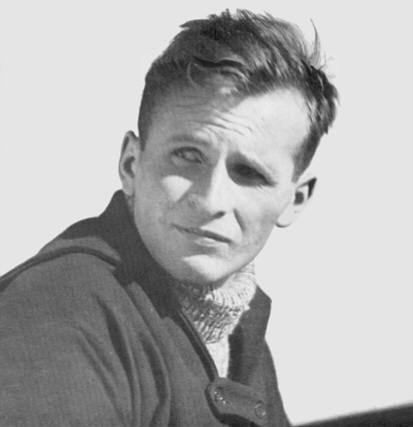
«Among the leaders of the pre–1933 German youth movements there was one who became a legend in his own lifetime. Eberhard Köbel—better known as “Tusk”— was born in Stuttgart in 1907, the son of a senior government official. Köbel joined a Wandervogel group as a boy, then became a member of the Freischar and leader of the Wurttemberg region of that group in 1928. In 1929, Tusk founded his own movement known as DJ 1–11 (Deutsche Jungenschaft—German Youth Movement of November 1). He revolutionized the youth press, radically changing newspapers’ layout, making them simpler, livelier and more attractive by using catchy illustrations and photographs. He introduced a new form of tent (the kohte from Lapland) which became very popular throughout the youth movement. The eccentric Tusk also introduced the banjo and balalaika; new songs and dancing styles were imported from Northern Europe. There was fanaticism and even ecstasy apparent in his speech and behavior. He was a visionary who thought in terms of a community for life, with all-embracing demands upon the individuals. Finding even the Prussian tradition too mild, Tusk introduced extreme ilitaristic practices and held up the ideal of the ancient Japanese warrior caste known as samurai. His dream was to forge German youth into one great army of followers whowere to become models of intrepidity, an elite of radiant physique and character, free from all bonds. Tusk’s Jungenschaft was a school of character. It became popular other groups envied his boys’ verve and élan, and often imitated their innovations, including attire and songs. He also met with jealousy and derision, and many rival leaders ridiculed his artificial pathos and tendency to swank. Tusk was a German nationalist but not an extreme one. As all right-wing leaders, he denounced the iniquities of the Treaty of Versailles, and attacked democrats, Marxists and Jews, but he never gave intelligible purpose to his feverish activities. His attitude in 1933 was more and more inconsistent. For a while he joined the Communist Party, and displayed much interest in Zen Buddhism. He advised members of his Deutsche Jungenschaft 1–11 to join Hitler’s youth and try to gain positions of command in order to subvert the Hitler Jugend from within. It seemed that Tusk nursed illusions of being appointed head of the Hitler Jugend. This was unthinkable and in January 1934 he was arrested by the Gestapo. Released in June 1934, he left Germany for Sweden and England where he stayed until the end of World War II, making a living as photographer and studying Far Eastern languages. In August 1944, Tusk, trying to make up for his own past political mistakes, expressed the hope that his former followers would fight as partisans against Hitler in the final phase of the war. The charismatic, legendary and eccentric Eberhard “Tusk” Köbel—regarded as both a genius and a charlatan—died in East Berlin in 1955, a sick, lonely and forgotten man.»
Trecho retirado de Hitler Youth, 1922-1945, Jean-Denis G. G. Lepage, MacFarland and Company, 2009. {Na fotografia, Eberhard Koebel}


Sem comentários:
Enviar um comentário